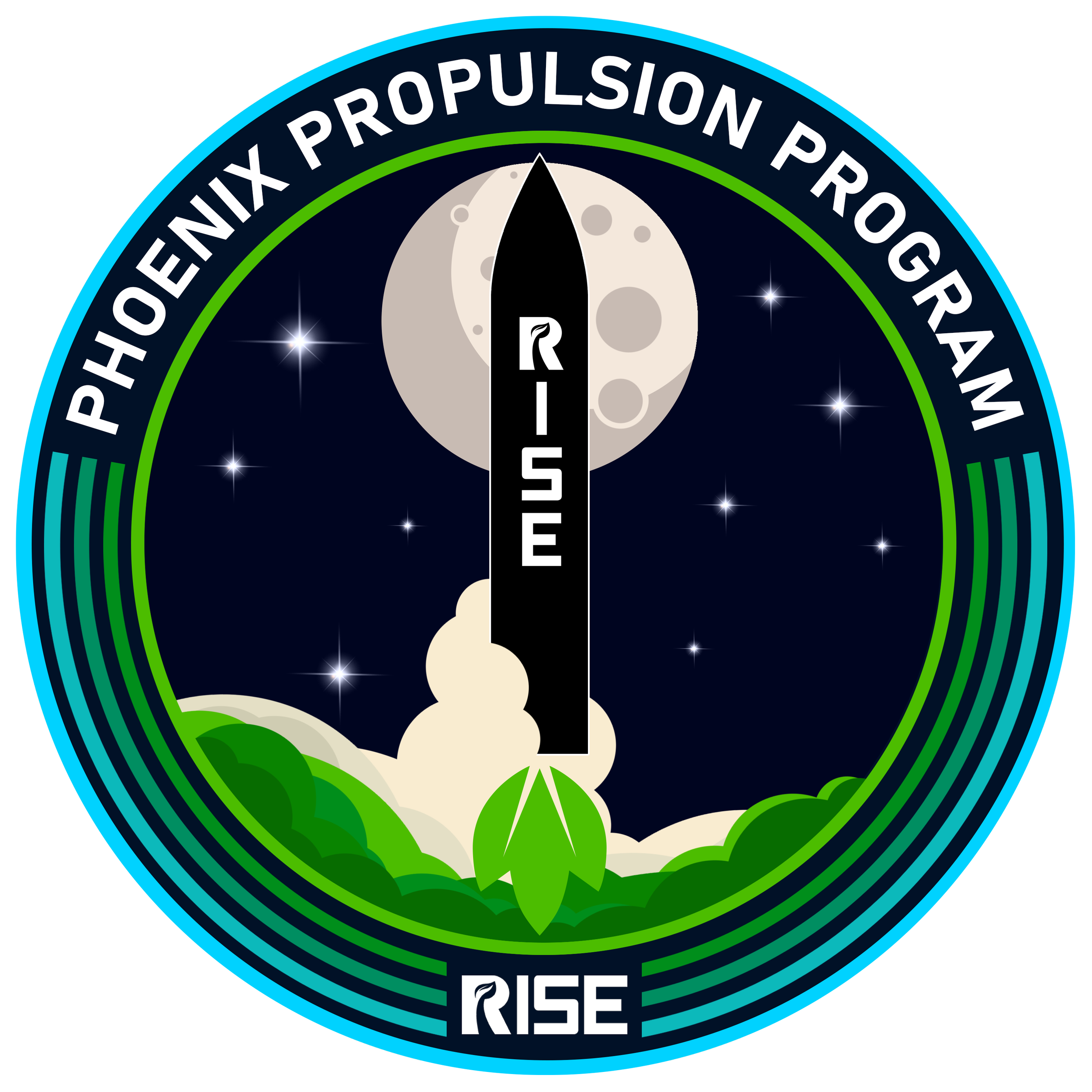
World’s first landing of a biofuel-powered rocket
Project Goal
The Alpha rocket will be the most innovative rocket made by Rise. This rocket will land using retro propulsion, which means that its engine is used to decelerate the vehicle for recovery. For this project, Rise’s own developed engine, Green Phoenix, will be used to power the rocket.
Specs
| Length | 3 m | |
| Dry mass | 8.4 kg | |
| Wet mass | 9.1 kg | |
| Max. altitude | 1022 m | |
| Max. velocity | 500 km/h | |
| Max. acceleration | 6.4 g | |
| Max. thrust | 500 N |
-

Mechanics
“The RISE Mechanics Department translates engineering concepts into physical reality. We design, manufacture, and test all the rocket’s mechanical systems and structural elements. Our job is to ensure the rocket’s systems are safe and reliable. We use several tools to help us, such as finite element analysis and computational fluid dynamics software. In our department also hands-on skills are necessary to manufacture rocket systems in a workshop.”
-Chief Mechanics
-

Electronics
“The electronics department represents one of the core pillars of the rocket. The electrical engineers of RISE serve as the bridge between the vision of the rocket scientists and the implementation of the desired systems. PCB design and production is a skill that more often than not is neglected in the early development of an electrical engineer. With this in mind, we plan to help both, newcomers to acquire a new set of skills and, experienced engineers to sharpen their skills in this area with the Altium software. With people who have set their eyes on the final frontier, we want to make sure that the future we dream of is brought one step closer.”
-Chief Electronics
-

Software
“Our software department collaborates closely with rocket scientists and aerospace experts to design and develop cutting-edge software solutions that optimize the performance, safety, and reliability of our rockets. From flight control systems, and propulsion algorithms to telemetry, and data analysis tools, our software systems tackle complex challenges with precision and creativity. The engineers leverage their expertise in programming languages like C++, Python, and MATLAB to build robust and scalable software architectures that enable real-time monitoring, simulation, and control of our rocket systems.“
-Chief Software
-

Propulsion
“The propulsion subteam handles research, development, and/or procurement of the propulsion systems that propel the Alpha rocket. Propulsion systems provide the force necessary to launch rockets into the sky. Those who choose to work in propulsion at RISE learn/understand how to harness the laws of nature to produce incredible amounts of energy, and leave with a solid understanding of materials, physics, and simulation.”
-Chief Propulsion
-

Control
“The control department’s primary role entails designing sophisticated control systems for our alpha launch vehicle. We are responsible for developing mechanisms to regulate both the ascent and altitude of the rocket, incorporating an Active Breaking System (ABS) for precise control. Eventually, the rocket will include thrust vector control for the descent, aiming to achieve a successful propulsive landing. By leveraging our expertise in control theory and engineering, the control department contributes to the team's objective of advancing rocket technology and achieving ambitious goals in space exploration.”
-Chief Control
Phoenix Propulsion Program
Green Phoenix
A capable rocket like Alpha needs a capable engine.
Phoenix Propulsion Program (PPP) was formed to research, develop, and realize the Green Phoenix experimental hybrid rocket motor. Green Phoenix gets its "Green" name from the use of biofuels as well as a design emphasis on reusability. Green Phoenix is the first of its kind; the engine combines RISE's novel biofuel mixture with a cost-effective, powerful nitrous oxide-based oxidizer to produce thrust. A series of valves and ignition equipment allows Phoenix to throttle deeply and restart mid-flight, which is necessary to complete Alpha's complex landing maneuvers.
Follow our events for upcoming engine tests.







